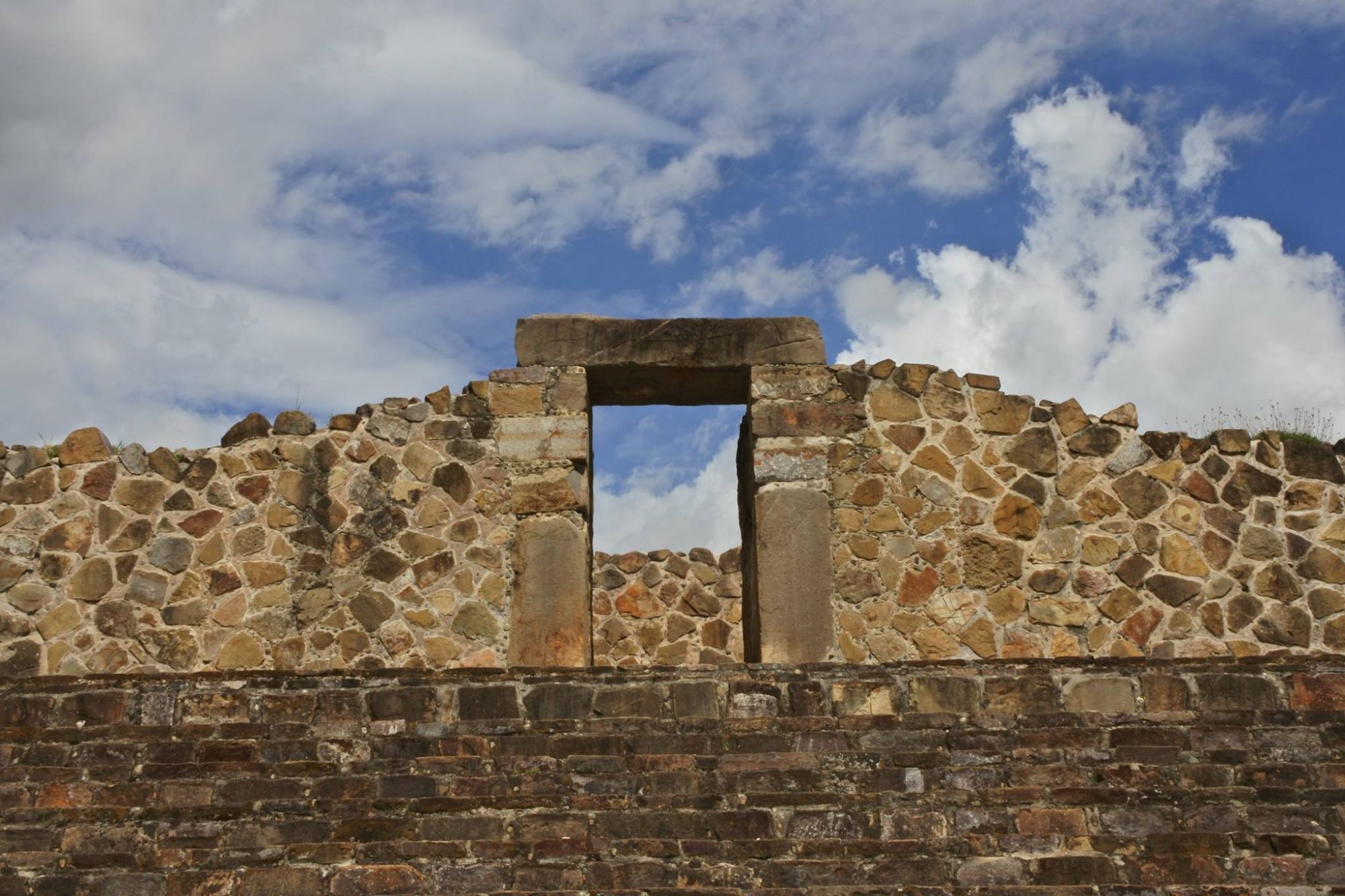For all travellers is normal to question if Oaxaca is safe to visit. Oaxaca is a wonderful state known for its rich cultural diversity, the variety of its natural landscapes and biodiversity, we’ll discuss safety for visitors travelling to Oaxaca, share tips for a secure trip, its different regions and highlight must-visit destinations in Oaxaca, which could almost be a country itself!
Firstly, we’re Tartarukus, a non-profit group dedicated to conservation along the Oaxaca coast. We’ve been collaborating with local communities since 2021, but our roots in Oaxaca go back to 2016. Let’s share our experience and thoughts on whether Oaxaca is safe or not! 😉
Where is Oaxaca located?
Oaxaca is situated in the southern part of Mexico, bordered by the Pacific Ocean to the south and the states of Guerrero, Puebla, and Veracruz to the east, north, and west, respectively. First of all, we are going to locate Oaxaca and its regions in a map:
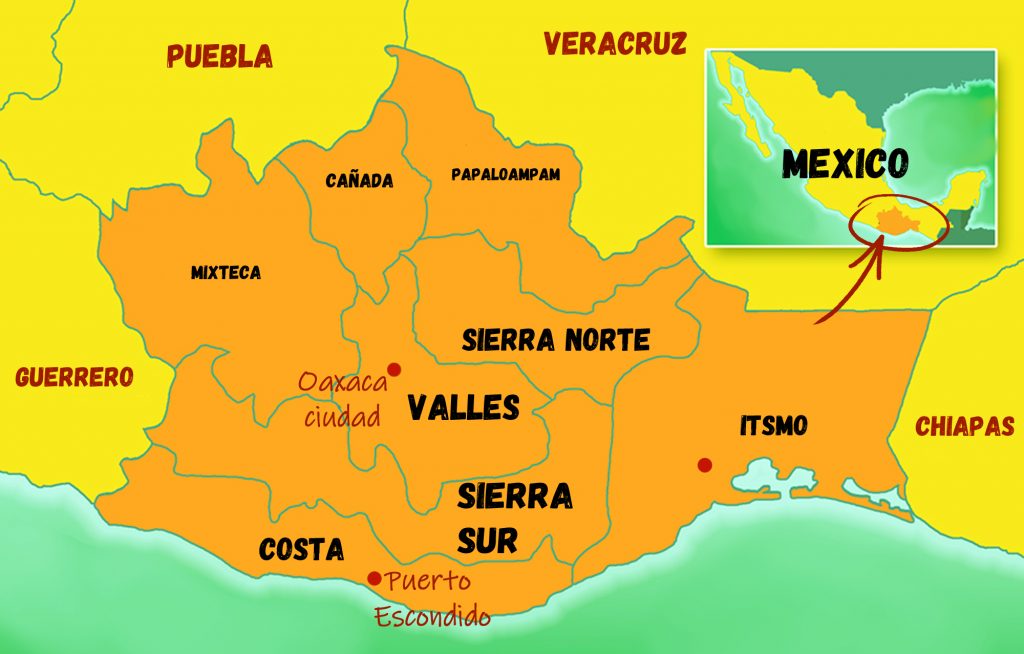
The most visited regions in Oaxaca by foreigners are: Valles Centrales, where the state capital, Oaxaca de Juarez, is located, Sierra Sur, Sierra Norte, and the Coast. Other areas of the state may be more challenging to access as they are less developed for tourism. Therefore, the safety in Oaxaca in these regions depends on your understanding of the specific place you wish to visit or if you have a guide or organization to assist you.
Some data of safety and tourism in Oaxaca
According to SECTUR, the government’s Tourism Secretary in Mexico, more people are visiting Oaxaca compared to last year (check it here). In 2023, half a million more visitors came than in 2022! This shows that Oaxaca is becoming known as a tourist destination. However, this doesn’t mean that it’s losing its essence. The state still holds onto its traditions, culture, gastronomy, and biodiversity, which continue to attract people interested in experiencing Oaxaca, and there are many, many, many authentic destinations that people don’t know.
When it comes to incidents, Oaxaca ranks as the 4th safest state out of 32 states in the whole country (check it here). Furthermore, this number is decreasing year by year, showing a positive trend in safety within the state.
Tips for traveling safely in Oaxaca
This is how we get around in Oaxaca to ensure safety and peace of mind on every journey we take!
1. Arriving by bus or plane
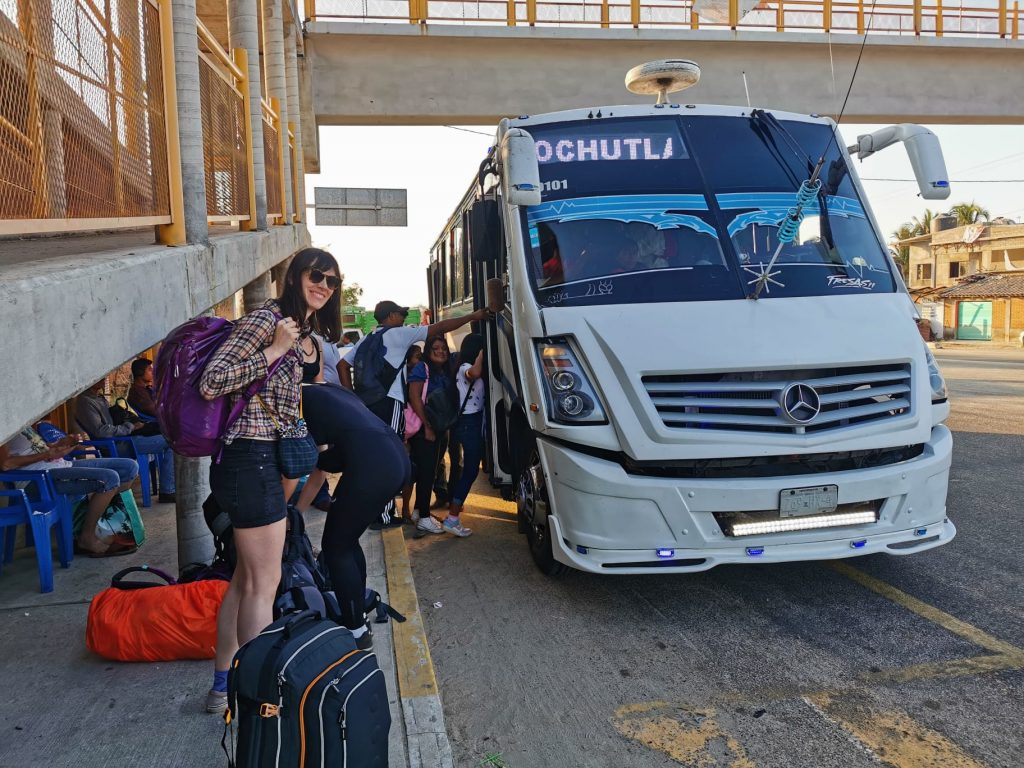
Getting to Oaxaca from Mexico City is easy with buses going directly to Oaxaca de Juarez in the Central Valleys, or to Puerto Escondido or Huatulco on the coast. You can also fly directly to these coastal cities, which saves time and costs about the same as a bus ticket, as well as there are flights from Mexico city to Oaxaca.
While the new Oaxaca-Puerto Escondido highway offers a very quick trip, it’s safer to avoid driving at night. Some drivers may be drunk, truck drivers might be tired, and some roads may not be good.
To travel between Oaxaca and Puerto Escondido, you have two options: take a transport service on the highway or choose a more adventurous route through the Sierra Sur mountains. You can visit charming villages like San José del Pacífico or San Mateo Río Hondo. This route takes longer but gives you a unique experience. If you pick the second option, you can take Lineas Unidas transport from Pochutla to Oaxaca, stopping in San José del Pacífico.
2. Nighttime caution in main cities (OAX, PXM, HUX)
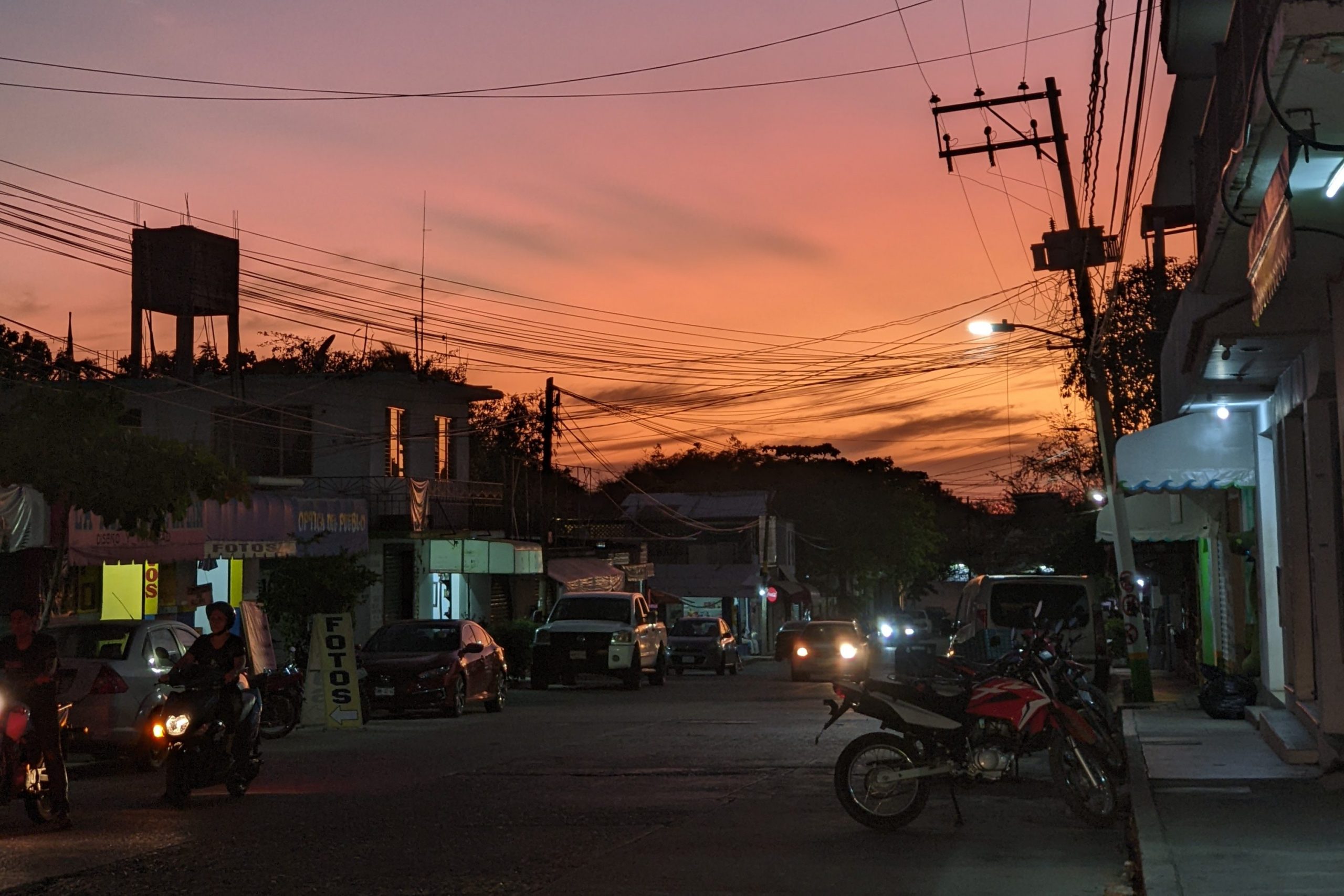
We’ve heard from many travelers who felt uneasy walking around Oaxaca at night. It’s best to arrive at your accommodation during the day and avoid coming into Oaxaca by bus after dark. In any city or destination in Mexico, arriving during the day usually feels safer and more welcoming than arriving at night. If you are arriving by flight, try to arrive before 15:00, as later flights get delayed and you may face problems with local transport.
In Puerto Escondido or Huatulco, things are generally peaceful. In Huatulco, nightlife is limited, but Puerto Escondido offers more options. Fortunately, thefts of motorcycles or cars are rare, so you can safely travel at night on your rented scooter to your hostel or accommodation. However, incidents do occur. For instance, some people have encountered aggressive dogs at night. It’s important not to turn your back on them and to carry a stick or stones to defend yourself if needed.
3. Choosing Safe Local Transportation: Tips for Travelers
Okay, let’s be honest. Most taxi drivers might try to overcharge you, especially if you have a different accent or don’t speak their language. That’s why it’s crucial to travel during the day when you have more options to choose a driver you feel comfortable with. Once you find a trustworthy driver, ask for their contact information for future trips.
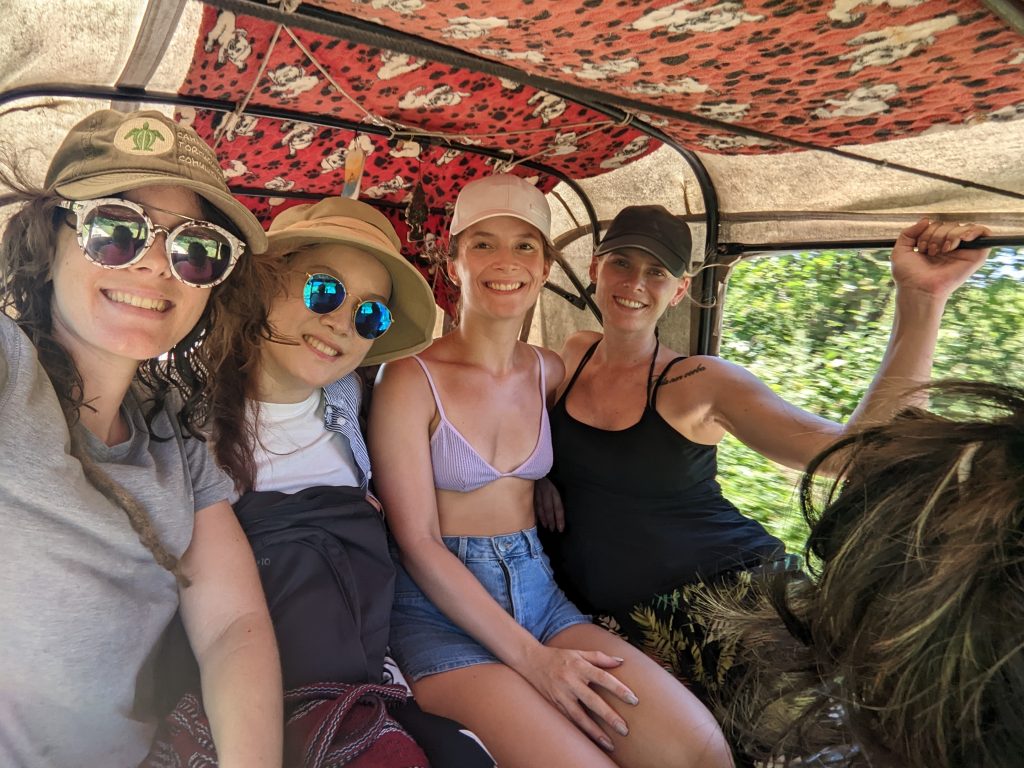
In terms of safety, taxi drivers prioritize the well-being of tourists and visitors. Many of us rely on taxis and public transportation daily, and drivers want to ensure that tourists feel secure and recommend this destination. However, they might charge a bit more for this peace of mind! 😄 Make sure that you ask the price for your trip before getting in the car.
If you have to travel at night, maybe to catch a sunset elsewhere, here’s a tip for safety and peace of mind: During the day, ask taxi drivers about fares and availability for your trip. Let them know when you’ll be traveling so they can schedule a ride for you. Get their contact info to book in advance and enjoy the sunset worry-free! 😊
4. Leave Expensive Items Behind
It’s wise to avoid carrying expensive belongings with you. Flashy clothes and accessories may attract unwanted attention. Oaxaca is a destination known for its focus on backpackers and nature enthusiasts seeking to recharge and connect with the environment. Showing off luxury items isn’t necessary here. Keep a low profile to blend in and enjoy your time without drawing unnecessary attention.
Safe destinations in Oaxaca
Oaxaca is quite safe, even in areas where there aren’t many tourists. The locals are friendly and always ready to help if you’re lost. But when it comes to getting around, having reliable updates on Google Maps, good public transportation options, and easily finding taxis are important. We’ll share some of the easiest and most authentic places for you to explore. Remember, while Oaxaca is growing, it’s still not crowded with tourists.
Oaxaca is a fantastic destination, although it does have the usual risks of any big city. To make the most of what Oaxaca has to offer and avoid getting lost, we recommend taking a guided tour to visit the most interesting places.
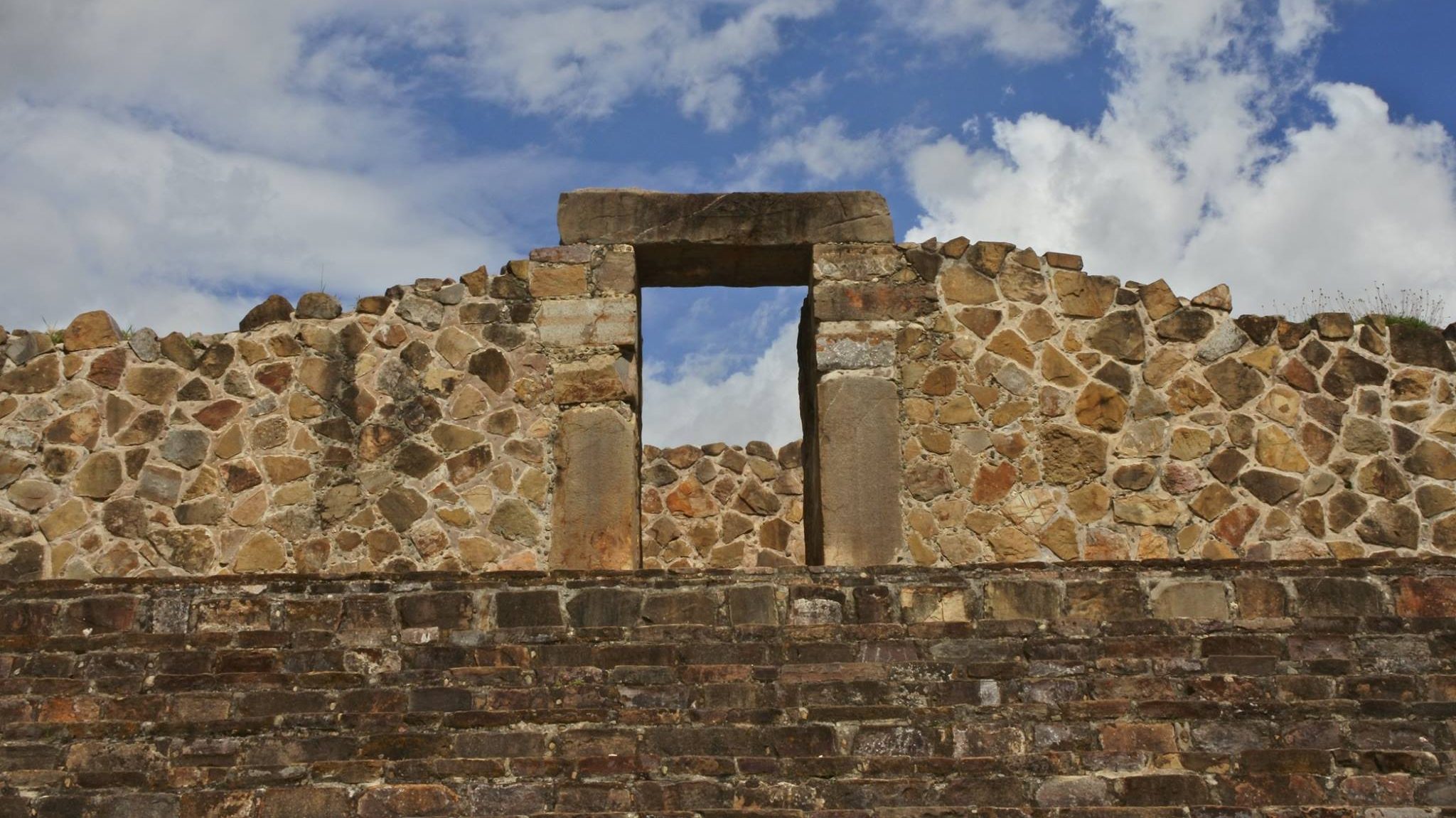
Monte Albán
- Monte Albán: Similar to Teotihuacán but atop a hill, offering breathtaking views. Best visited during the rainy season from July to December when everything is green.
- Hierve el Agua: A petrified waterfall. We recommend visiting on weekdays (Monday to Thursday) to avoid crowds.
- Tule Tree: The world’s thickest tree, located in a village, showcasing the importance of preserving trees. We wish more places followed suit.
- Oaxaca Center: A must-visit!
- Mitla Temple: Known as the temple for the dead, it’s an important part of the Valley’s history.
There are many other cities worth exploring, like Tlacolula and Teotitlán del Valle. Teotitlán del Valle is especially amazing during Día de Muertos on the 1st and 2nd of November, so we encourage you to visit.
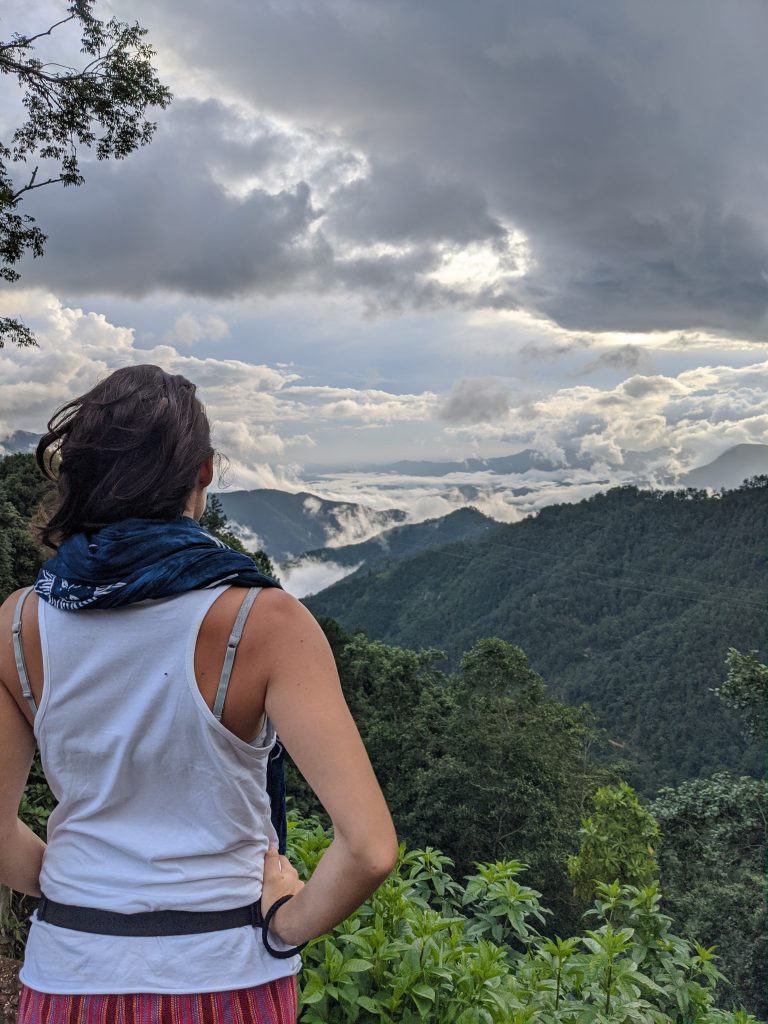
San José del Pacífico
As part of your journey to the coast, consider spending one or two days relaxing and enjoying the fresh mountain air in San José del Pacífico. This peaceful village is famous for its chill vibes and is well-known for its hallucinogenic mushrooms, especially during the rainy season from July to September.
Mazunte
After leaving San José, you’ll arrive in Pochutla, near Mazunte, easily accessible by public transport from the pasajeras station. Mazunte is a small village known for its hippie vibes, attracting many travelers with its beaches and collective activities. Be sure to catch a sunset at Punta Cometa, the southernmost point of the Pacific Ocean. From December to March, you can see migrating whales from there.
Natural Protected Areas
Escobilla Beach Sanctuary. This is the perfect place to see turtles and support two local groups who protect them. Experience the arribada phenomenon, where you can see up to ten thousand turtles nesting at the same time! It’s a natural spectacle, unique for life.
Chacahua National Park. One of the most representative places of the coast, famous for its huge lagoons, the relaxed vibe of Chacahua village, and its beach for surfing, where the biggest sea turtle in the world, nest, the leather back sea turtle.
Huatulco National Park. Huatulco offers many beautiful and natural attractions: 9 bays, some perfect for snorkeling, hiking trails in the jungle, waterfalls, good places, and guides for birding, … The city itself may not appeal to everyone as it’s full of hotels, but its surroundings are amazing!
Puerto Escondido
Puerto Escondido is known as the surfing hub of Mexico. It boasts a lively community, diverse dining options (including many for vegetarians), and a must-visit local market typical of Oaxaca.
When it comes to accommodation, consider staying in La Punta Zicatela, Zicatela itself, or Rinconada. Each area offers its own unique charm and atmosphere.
Rural villages
If you’re looking to experience the true essence of Mexico, visiting the villages is a must. Here, people welcome you into their homes, allowing you to immerse yourself in Mexican culture. If you’re interested in visiting traditional villages while also contributing to the protection of nature and wildlife, check out our volunteering trip program. It’s a chance to live like a local and make a meaningful difference in the community.
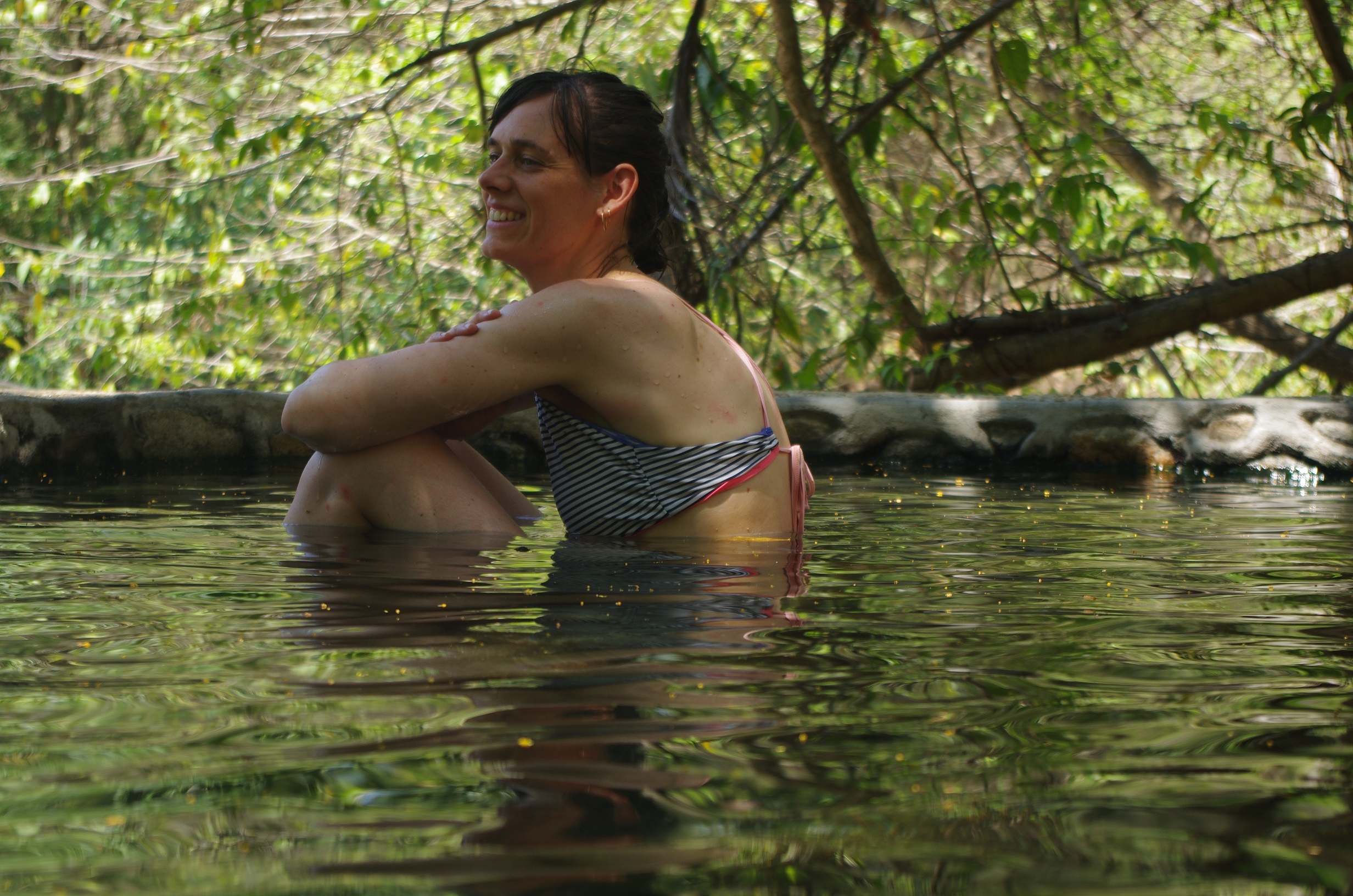
Travel along Oaxaca coast with us

